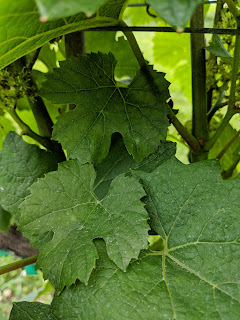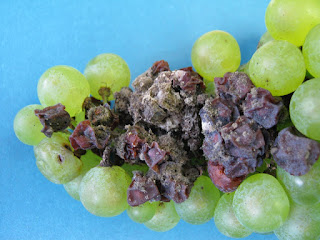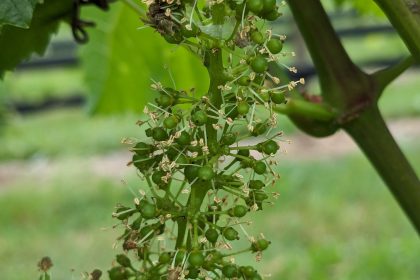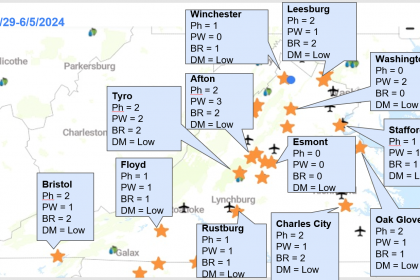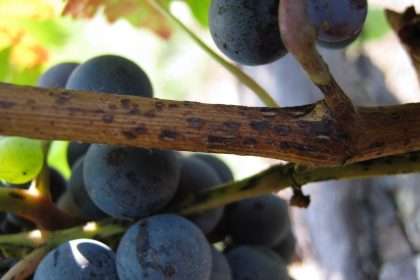We have a fair number of options for powdery mildew management. Sulfur (FRAC = M2) is an economical option, and there are range of products with different modes of action (= FRAC code). Examples are: a DMI fungicides (e.g., Rally, Elite, Mettle, Rhyme, etc, FRAC 3), Quintec (FRAC 13), Vivando (FRAC 50), Luna Experience (FRAC 7 + 3), Topguard EQ (FRAC 11 + 3), Aprovia (FRAC 7), Torino (FRAC U6), etc. Please make sure to rotate FRAC codes. Try to limit the use of a particular FRAC code to twice a season with an exception of ones starts from M. Unfortunately, we have widespread of QoI (FRAC 11, e.g., Abound, Flint, etc.) fungicide resistance powdery mildew isolates in VA, so, I would not count on the QoI material for powdery mildew management.
I mentioned about Botrytis in the previous post too, but just an another reminder. Development of Botrytis depends on what type of varieties you grow, as well as your canopy management strategies. White-fruited varieties with tight cluster architecture tend to be more prone to Botrytis. I.e., a red-fruited variety with loose clusters probably does not have many issues with Botrytis, especially if the canopy is well maintained. Since Botrytis pathogen likes high humidity, poorly managed canopy that traps humidity will help them to thrive. Bloom time is important for Botrytis management because this fungus can infect flower and flower debris, and come back later when berries are maturing. There is a number of Botrytis materials such as Rovral and Meteor (FRAC 2), Elevate (FRAC 17), Vanguard and Scala (FRAC 9), Luna Experience (FRAC 7+3), Kenja (FRAC 7), Switch (FRAC 9 + 12), etc. As with powdery mildew, QoI fungicides are no longer the best material for us due to the development of QoI-resistant Botrytis isolates throughout VA.
Also I should note that a research from Penn State showed that when Botrytis infect flowers, symptom development requires wounds on the berry skin. One of causes of wounds on grape berry skin is powdery mildew which damages skin cells to cause splitting. Also speaking of which, grape berry moth which also causes wounds on the berry skin tends to show up in the vineyards around this time of the year. Unlike diseases, you can wait until you see webbing on the clusters to make a decision on spraying against grape berry moth. More in formation can be found in Dr. Doug Pfeiffer’s web page.
As I noted in the previous post, grape clusters are sensitive to infection by powdery mildew, downy mildew, and black rot infection from bloom to 4-6 weeks after bloom. The length of this critical time depends on cultivar. For example, it should be 3-4 weeks for American grapes (V. labrusca), 5-6 weeks for French grapes (V. vinifera), and somewhere between the two for hybrids. I know spraying vineyards are not a fun activity, but please make sure that you have a good coverage during the critical period. In a typical year, once we pass the Fourth of July weekend, we can relax a bit.

